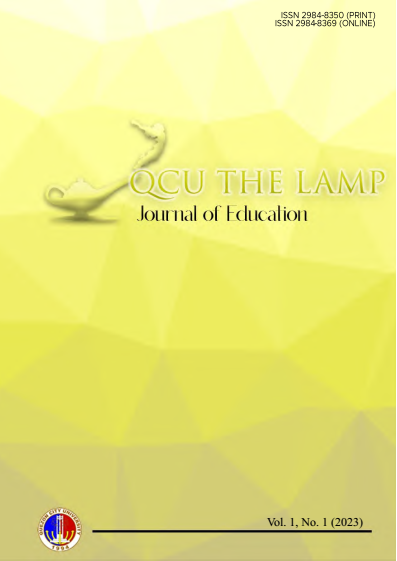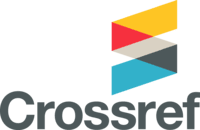AN ASSESSMENT OF STRATEGIES USED IN TEACHING WITH THE INTEGRATION OF KNOWLEDGE AND SKILLS USING TECHNOLOGY
DOI:
https://doi.org/10.64807/nm1gyg24Abstract
Achieving a harmonious alignment between pedagogy and content is imperative for the meaningful integration of technology within an educational context. The present study, conducted at Quezon City University during the Academic Year 2020–2021, aims to assess the level and effectiveness of technological content knowledge among faculty members and its impact on various learning methods in the new normal. It employs the descriptive research design. A total of one hundred twelve (112) teachers, two hundred fifty-four (254) students, and nine (9) academic heads participated in this study. Data shows that the overall perceived level of teachers’ technological content knowledge is “somewhat confident,” with a mean value of 3.32. Friedman test results indicate that there is no significant difference in the perceived levels of teachers’ technological content knowledge among academic heads, teachers, and students. When it comes to the effectiveness of teachers’ technological content knowledge, the overall perception is that it is effective (mean value of 3.29). Similar to the perceived levels, the Friedman test results indicate that there is no significant difference in the assessment of the effectiveness of teachers’ technological content knowledge among academic heads, teachers, and students. The study shows that teachers’ technological content knowledge positively influences both modular distance learning and online distance learning modalities. The study proposes collaboration tools to enhance teaching with technology integration. The study suggests that there is room for improvement in teachers’ technological content knowledge, particularly in areas like technology integration, strategies and techniques, classroom management, and assessment skills.
Keywords:
Teaching Strategies, Technology Integration, TPACK, Educational Technology, Online Learning, Modular Distance LearningReferences
Basilaia, G., & Kvavadze, D. (2020). Transition to online education in schools during a SARS-CoV-2 coronavirus (COVID-19) pandemic in Georgia. Pedagogical Research, 5(4), em0067. https://doi.org/10.29333/pr/7937
Bulman, G., & Fairlie, R. (2016). Technology and education: Computers, software, and the internet (NBER Working Paper No. 22237). National Bureau of Economic Research. https://doi.org/10.3386/w22237
Calmorin, L., & Calmorin, M. (2012). Statistics in education and the sciences. Rex Bookstore.
Cantiga, Y. (2020, August 28). What is TV and radio-based teaching? We asked a teacher-broadcaster! My Pope Philippines. https://www.mypope.com.ph/deped-tv-radio-based-teaching/
Chavez, C. (2020, August 22). Quezon City’s COVID-19 cases surge to 9,540 or 5.23 percent of national tally. Manila Bulletin. https://mb.com.ph/2020/08/22/quezon-citys-covid-19-cases-surge-to-9540-or-5-23-percent-of-national-tally/
Crawford, J., Butler-Henderson, K., Rudolph, J., & Glowatz, M. (2020). COVID-19: 20 countries’ higher education intra-period digital pedagogy responses. Journal of Applied Learning & Teaching, 3(1), 1–20. https://doi.org/10.37074/jalt.2020.3.1.7
Crisolo, N. (2018). Sharpening education through the use of information and communications technology. ERIC. https://eric.ed.gov/?id=ED586949
Egbert, J., Paulus, T., & Nakamichi, Y. (2017). The impact of CALL instruction on language classroom technology use: A foundation for rethinking CALL teacher education? Language Learning & Technology, 6(3), 108–126. http://llt.msu.edu/vol6num3/egbert/default.html
Fraenkel, J. R., Wallen, N. E., & Hyun, H. H. (2013). How to design and evaluate research in education (9th ed.). McGraw-Hill Book Company.
Garcia-Valcarcel, A., & Mena, J. (2016). Information technology as a way to support collaborative learning. Journal of Information Technology Research, 9(1), 1–17. https://doi.org/10.4018/JITR.2016010101
Ghora, V., & Bhatti, S. (2016). Students’ perception on use of technology in the classroom at higher education institutions in Philippines. University of Wollongong. https://docplayer.net/55781129-Students-perception-on-use-of-technology-in-the-classroom-at-higher-education-institutions-in-philippines.html
Golden, C. (2020, March 23). Remote teaching: The glass half-full. Educause Review. https://er.educause.edu/blogs/2020/3/remote-teaching-the-glass-half-full
Haapaniemi, J., Veraldi, S., Malin, A., & Palojoki, P. (2021). Teacher autonomy and collaboration as part of integrative teaching—Reflections on the curriculum approach in Finland. Journal of Curriculum Studies, 53(4), 546–562. https://doi.org/10.1080/00220272.2020.1759145
Hodges, C., Moore, S., Lockee, B., Trust, T., & Bond, A. (2020, March 27). The difference between emergency remote teaching and online learning. Educause Review. https://er.educause.edu/articles/2020/3/the-difference-between-emergency-remote-teaching-and-online-learning
IRIS Center. (2019). How can school personnel intensify and individualize instruction? Vanderbilt University. https://iris.peabody.vanderbilt.edu/module/dbil/cresource/q2/p07/
Janssen, N., Knoef, M., & Lazonder, A. (2019). Technological and pedagogical support for preservice teachers’ lesson planning. Technology, Pedagogy and Education, 28(4), 421–437. https://doi.org/10.1080/1475939X.2019.1569554
Kasim, M., & Singh, C. K. S. (2017). A review of research on preservice teachers’ technological pedagogical content knowledge for teaching English language. Asian Journal of University Education, 13(2), 79–88. https://www.researchgate.net/publication/320820640_A_Review_of_Research_on_Pre_Service_Teachers_Technological_Pedagogical_Content_Knowledge_for_Teaching_English_Language
Kurt, S. (2018, August 28). TPACK: Technological pedagogical content knowledge framework. Educational Technology. https://educationaltechnology.net/technological-pedagogical-content-knowledge-tpack-framework/
McGraw-Hill. (2019, June 10). What is TPACK theory and how can it be used in the classroom? https://www.mheducation.ca/blog/what-is-tpack-theory-and-how-can-it-be-used-in-the-classroom/
Meskill, C., Mossop, J., DiAngelo, S., & Pasquale, R. (2016). Expert and novice teachers talking technology: Precepts, concepts, and misconcepts. Language Learning & Technology, 6(3), 46–57. http://llt.msu.edu/vol6num3/pdf/meskill.pdf
Mulyanti, B., Purnama, W., & Pawinanto, R. (2020). Distance learning in vocational high schools during the COVID-19 pandemic in West Java Province, Indonesia. International Journal of Vocational and Technical Education, 12(4), 1–10.
Rosenberg, J. M., & Koehler, M. J. (2015). Context and technological pedagogical content knowledge (TPACK): A systematic review. Journal of Research on Technology in Education, 47(3), 186–210. https://doi.org/10.1080/15391523.2015.1052663
Ruggiero, D., & Mong, C. J. (2015). The teacher technology integration experience: Practice and reflection in the classroom. Journal of Information Technology Education: Research, 14, 161–178. http://www.jite.org/documents/Vol14/JITEv14ResearchP161-178Ruggiero0958.pdf
Santos, J. (2017). 21st century learning skills: A challenge in every classroom. International Journal of Emerging Multidisciplinary Research, 1(1), 31–35. https://doi.org/10.22662/IJEMR.2017.1.1.031
Santos, J., & Castro, R. (2021). Technological pedagogical content knowledge (TPACK) in action: Application of learning in the classroom by pre-service teachers (PST). Social Sciences & Humanities Open, 3(1), 100110. https://doi.org/10.1016/j.ssaho.2021.100110
UNESCO. (2018). Effective and appropriate pedagogy. IIEP Learning Portal. https://learningportal.iiep.unesco.org/en/issue-briefs/improve-learning/teachers-and-pedagogy/effective-and-appropriate-pedagogy
Valtonen, T., Sointu, E., Kukkonen, J., Kontkanen, S., Lambert, M. C., & Mäkitalo-Siegl, K. (2017). TPACK updated to measure pre-service teachers’ twenty-first century skills. Australasian Journal of Educational Technology, 33(3), 1-15. https://doi.org/10.14742/ajet.3021
Valtonen, T., Leppänen, U., Hyypiä, M., Sointu, E., Smits, A., & Tondeur, J. (2020). Fresh perspectives on TPACK: Pre-service teachers’ own appraisal of their challenging and confident TPACK areas. Education and Information Technologies, 25(4), 2823–2842. https://doi.org/10.1007/s10639-019-10092-4
Voogt, J., & McKenney, S. (2016). TPACK in teacher education: Are we preparing teachers to use technology for early literacy? Technology, Pedagogy and Education, 26(1), 69–83. https://doi.org/10.1080/1475939X.2016.1174730
West, A., Swanson, J., & Lipscomb, L. (2017). Ch. 11 scaffolding. In Teaching diverse learners. Pressbooks. https://granite.pressbooks.pub/teachingdiverselearners/chapter/scaffolding-2/
Zayapragassarazan, Z. (2020). COVID-19: Strategies for engaging remote learners in medical education. F1000Research, 9, 273. https://doi.org/10.12688/f1000research.23199.1
Downloads
Published
Issue
Section
License
Copyright (c) 2025 Araceli C. Suyat (Author)

This work is licensed under a Creative Commons Attribution 4.0 International License.
All articles published in QCU Journals are made available under the Creative Commons Attribution 4.0 International License (CC BY 4.0).
This license allows for:
- Sharing – copying and redistributing the material in any medium or format.
- Adapting – remixing, transforming, and building upon the material for any purpose, including commercial use.





